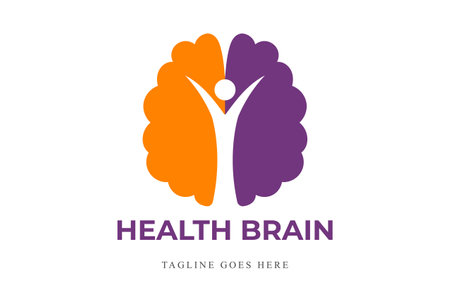Understanding Mental Health in the Modern Workplace
Mental health awareness has seen a significant shift in American workplaces over the past decade, especially among Millennials and Gen Z workers. Unlike previous generations, these younger employees are more open about mental health challenges and advocate for supportive environments where emotional well-being is prioritized. The days of sweeping anxiety, depression, or burnout under the rug are fading as conversations about mental wellness become mainstream topics across industries. Millennials and Gen Zers expect employers to foster a culture of transparency, empathy, and flexibility—qualities that not only support individual growth but also boost overall productivity and engagement. With this evolution, mental health is no longer viewed as a taboo or personal weakness; instead, it’s recognized as an essential component of workplace culture that influences everything from employee retention to innovation. This cultural shift marks a new era where breaking the stigma around mental health is not just encouraged, but expected in American workspaces.
2. Challenging Stigma: Social and Cultural Barriers
Mental health stigma in the U.S. has deep historical roots, shaped by decades of misunderstanding and misinformation. For much of the twentieth century, mental health issues were often seen as personal failings or weaknesses, rather than legitimate medical conditions. This outdated mindset still lingers, especially in certain communities and industries, making it difficult for Millennials and Gen Z workers to speak openly about their mental health struggles.
Social and cultural barriers continue to reinforce this stigma today. From childhood, many Americans are taught to “tough it out” or “keep it together,” equating emotional vulnerability with a lack of resilience. These attitudes can lead to shame and silence—particularly among younger employees who are navigating high-pressure workplaces and fast-changing career paths.
How Stigma Impacts Younger Workers
The effects of stigma are especially pronounced for Millennials and Gen Z employees, who value openness but face unique challenges:
Barrier |
Impact on Younger Workers |
|---|---|
Fear of Judgment |
Reluctance to disclose mental health concerns at work due to fear of being perceived as less capable or committed. |
Cultural Expectations |
Pressure to achieve and “have it all together” leads to suppressing emotions or avoiding help. |
Lack of Representation |
Few visible leaders openly discuss mental health, perpetuating a cycle of silence. |
Workplace Myths |
Misperceptions that seeking support equals weakness or poor performance. |
Cultural Pressures Unique to Millennials and Gen Z
Younger generations face distinct cultural pressures compared to previous cohorts. The rise of social media has amplified unrealistic standards for success, happiness, and work-life balance. There’s an unspoken expectation to always be “on”—whether that means being productive, available, or positive—even when struggling internally. Additionally, many Millennials and Gen Zers are entering workplaces still adapting to conversations about diversity, inclusion, and mental well-being.
The combination of these factors creates a challenging landscape where young professionals must navigate both external judgment and internalized stigma. Breaking down these barriers is essential not only for individual growth but also for building healthier organizations where everyone feels empowered to thrive.

3. Real Talk: Encouraging Open Conversations at Work
For Millennials and Gen Z workers, mental health isn’t just a personal issue—it’s something that impacts their work, their relationships, and their daily lives. Luckily, more U.S. companies are realizing that breaking the stigma means making space for real conversations about mental health in the workplace. But how do organizations actually do this? Here are some strategies and real-world examples that show what supportive environments look like.
Leading by Example: Management Sets the Tone
When leaders share their own experiences or openly discuss mental health, it sends a powerful message to everyone. For example, executives at progressive tech companies like Salesforce and Microsoft have been known to talk about their own therapy journeys or times they’ve struggled with burnout. This vulnerability not only humanizes leadership but also signals to employees that it’s safe to speak up.
Mental Health Champions and Peer Support Networks
Some organizations appoint “mental health champions”—employees who volunteer as go-to resources for anyone needing support or information. Others build peer support networks where colleagues can connect in a judgment-free zone. For instance, Google’s Blue Dot initiative trains employees to recognize signs of stress and offer first-line support, making it easier to start important conversations without fear of reprisal.
Making Mental Health Part of Everyday Culture
The most effective workplaces don’t just host annual seminars or distribute flyers; they integrate mental health into everyday routines. This could mean regular “wellness check-ins” during team meetings, flexible work hours for therapy appointments, or Slack channels dedicated to self-care tips and mental health discussions. Companies like Bumble even offer mental health days as part of their PTO package, sending the message that taking care of yourself is always encouraged—not just tolerated.
By normalizing these conversations, both employers and employees help create a culture where no one has to hide their struggles. It’s about building trust, showing empathy, and making sure everyone knows: It’s okay not to be okay—and it’s even better when we talk about it together.
4. Resources and Tools: What’s Actually Helping?
For Millennials and Gen Z workers in the U.S., tackling mental health challenges is more than just a conversation—its about finding the right resources that fit their lifestyles and values. This tech-savvy, wellness-focused generation has embraced a variety of tools, apps, and programs to support their mental well-being at work and beyond.
Popular Mental Health Apps
With smartphones always within reach, mental health apps have become a go-to solution for stress management, meditation, and therapy access. Here are some favorites among young professionals:
| App Name | Main Features | Why Millennials & Gen Z Love It |
|---|---|---|
| Headspace | Guided meditation, mindfulness exercises, sleep aids | User-friendly interface, bite-sized sessions for busy schedules |
| Calm | Meditation, breathing exercises, soothing music, sleep stories | Visually appealing design, celebrity narrators, variety of options |
| Talkspace | Online therapy with licensed therapists via text or video chat | Flexible communication, privacy, insurance coverage options |
| BetterHelp | Virtual counseling tailored to individual needs and preferences | No commute needed, affordable plans, diverse therapist network |
Employee Assistance Programs (EAPs)
Many forward-thinking U.S. companies now offer Employee Assistance Programs (EAPs) as part of their benefits package. EAPs typically provide confidential counseling services, crisis intervention, and resources for managing work-life stress—all at no cost to employees. Millennials and Gen Z workers appreciate EAPs because they demonstrate a company’s commitment to holistic well-being and help reduce barriers to seeking support.
What Makes a Good EAP?
- Anonymity: Employees can access help without fear of workplace stigma.
- Diversity of Services: Counseling, legal advice, financial planning, and more.
- Accessibility: 24/7 hotlines and virtual appointments cater to different schedules.
- Cultural Competency: Programs tailored to diverse backgrounds and identities.
Community Resources and Peer Support Networks
Younger generations thrive on community and shared experiences. Local organizations like NAMI (National Alliance on Mental Illness), support groups such as The Mighty, or even Slack channels within companies create spaces for open dialogue. These networks offer peer-to-peer encouragement, practical tips for coping with workplace stressors, and a sense of belonging that helps break isolation.
The Bottom Line: What’s Working?
The most effective resources are those that feel authentic and accessible. Whether it’s a meditation app during a lunch break or reaching out to an EAP counselor after hours, Millennials and Gen Z want choices that respect their autonomy while providing real support. As more workplaces invest in these tools—and as conversations around mental health continue to normalize—young professionals are empowered to take charge of their own well-being without fear or shame.
5. Empowering Self-Advocacy and Allyship
For Millennials and Gen Z workers in the U.S., self-advocacy and allyship are crucial steps in breaking the stigma around mental health at work. Learning to speak up for your own needs starts with understanding your rights and available resources. Whether it’s requesting flexible hours, asking for a mental health day, or seeking reasonable accommodations under the ADA, knowing how to communicate these needs to your manager is essential. For example, you might start by scheduling a private conversation with HR or using employee assistance programs (EAPs) that many companies now offer.
Practical Steps for Self-Advocacy
Millennials and Gen Z are redefining what it means to prioritize well-being on the job. Set clear boundaries around work-life balance—don’t be afraid to turn off notifications after hours or use your PTO for rest and recovery. Practice communicating openly about stressors with supervisors and coworkers, using “I” statements to express what you need without fear of judgment. Consider documenting your requests via email so there’s a record of your communication, especially if you need ongoing support.
Allyship: Supporting Each Other
Allyship goes beyond just being kind—it means actively supporting colleagues facing mental health challenges. This could look like checking in on teammates who seem overwhelmed, encouraging open conversations about stress during team meetings, or sharing resources such as counseling services or support groups. If someone discloses a mental health concern, listen nonjudgmentally and ask how you can help, rather than offering unsolicited advice.
Workplace Policies That Make a Difference
Progressive employers across the U.S. are implementing policies that foster a supportive environment for mental health advocacy. Examples include unlimited PTO policies that allow employees to take time off as needed, “mental health first aid” training for managers, and creating Employee Resource Groups (ERGs) focused on wellness. Some companies even designate quiet rooms or promote meeting-free days to reduce burnout. By embracing these practices—and encouraging others to do the same—Millennials and Gen Z workers are not just advocating for themselves but helping build workplaces where everyone feels empowered to prioritize their mental well-being.
6. Looking Ahead: Building a Healthier Workplace Culture
As we look to the future, the conversation around mental health in American workplaces is only just beginning. For Millennials and Gen Z, who have already shown remarkable openness and advocacy for well-being, the next step is to embed these values deeply into company culture. This means shifting from reactive support—like offering Employee Assistance Programs—to proactive strategies that normalize everyday conversations about mental health.
Proactive Leadership and Policy Changes
Organizations need leaders who champion mental wellness at every level. Transparent policies, mental health training for managers, and leadership that models vulnerability can help break down barriers for younger workers. It’s not just about having resources available; it’s about making sure employees feel safe and empowered to use them without fear of judgment or career repercussions.
Designing Flexible Work Environments
Workplaces can further destigmatize mental health by embracing flexibility. Hybrid schedules, remote work options, and results-oriented environments help reduce stress and allow individuals to balance their professional and personal needs. For Millennials and Gen Z—who value autonomy and trust—these adjustments foster a sense of belonging and psychological safety.
Continuing the Conversation
The journey doesn’t end with policy changes or new benefits. Ongoing dialogue—through workshops, employee resource groups, anonymous surveys, or even informal check-ins—will keep mental health front-of-mind. By encouraging honest conversations and listening to younger generations’ needs, employers can adapt quickly to changing expectations and set a new standard for workplace well-being.
Ultimately, breaking the stigma will require a cultural shift—one where mental health is seen as an integral part of overall success. If American companies commit to this vision today, they’ll empower not just Millennials and Gen Z but all generations of workers to thrive together in healthier, more supportive environments.


